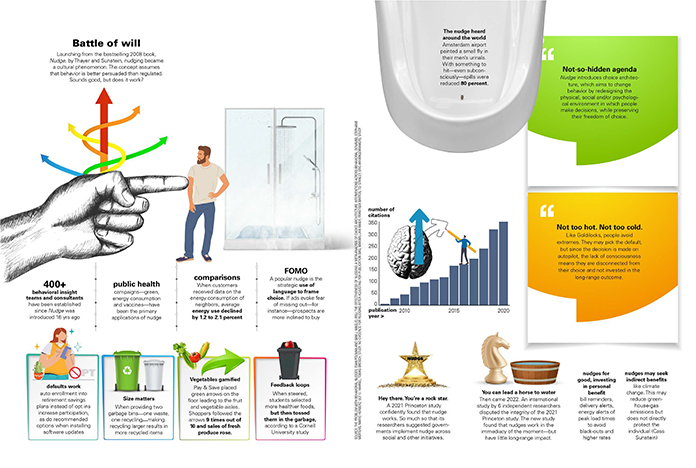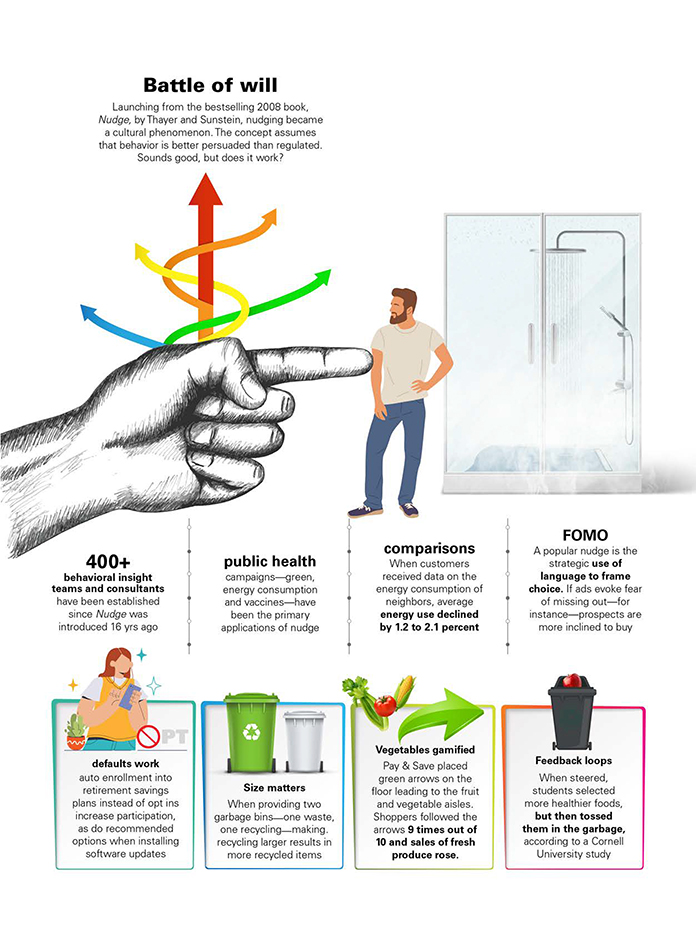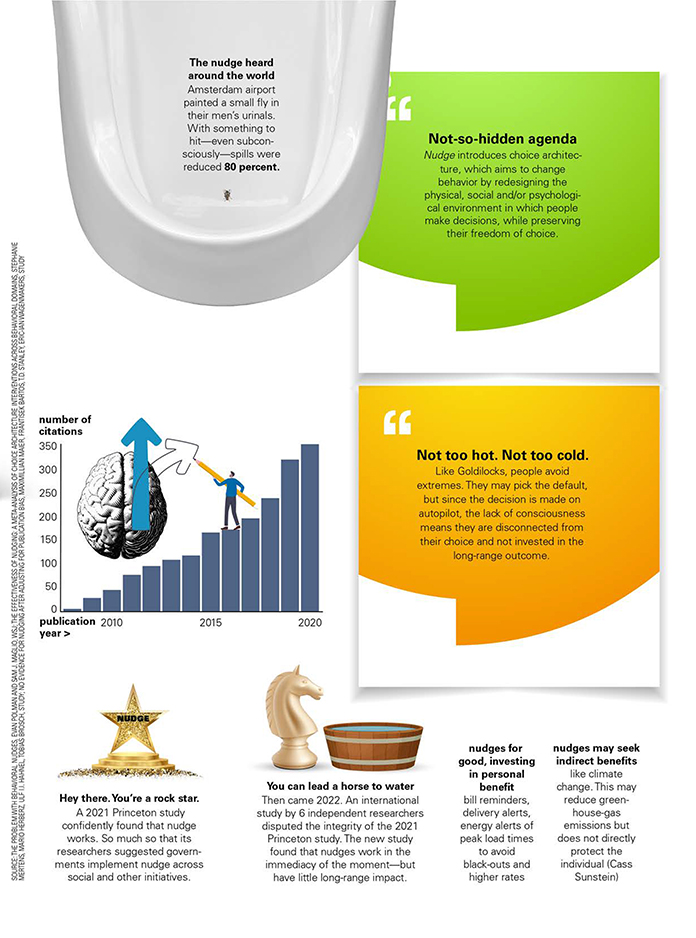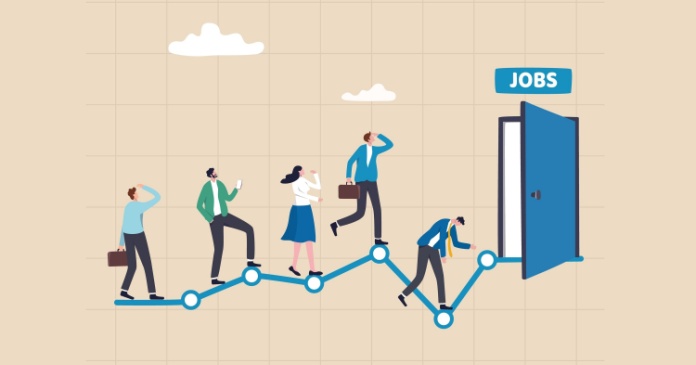Launching from the bestselling 2008 book, Nudge, by Thayer and Sunstein, nudging became a cultural phenomenon. The concept assumes that behavior is better persuaded than regulated. Sounds good, but does it work?
400+ behavioral insight teams and consultants have been established since Nudge was introduced 16 yrs ago
public health campaigns—green, energy consumption and vaccines—have been the primary applications of nudge
comparisons When customers received data on the energy consumption of neighbors, average energy use declined by 1.2 to 2.1 percent
FOMO A popular nudge is the strategic use of language to frame choice. If ads evoke fear of missing out—for instance—prospects are more inclined to buy
defaults work auto enrollment into retirement savings plans instead of opt ins increase participation, as do recommended options when installing software updates
Size matters When providing two garbage bins—one waste, one recycling—making, recycling larger results in more recycled items
Vegetables gamified Pay & Save placed green arrows on the floor leading to the fruit and vegetable aisles. Shoppers followed the arrows 9 times out of 10 and sales of fresh produce rose.
Feedback loops When steered, students selected more healthier foods, but then tossed them in the garbage, according to a Cornell University study
The nudge heard around the world Amsterdam airport painted a small fly in their men’s urinals. With something to hit—even subconsciously—spills were reduced 80 percent.
Not-so-hidden agenda Nudge introduces choice architecture, which aims to change behavior by redesigning the physical, social and/or psychological environment in which people make decisions, while preserving their freedom of choice.
Not too hot. Not too cold. Like Goldilocks, people avoid extremes. They may pick the default, but since the decision is made on autopilot, the lack of consciousness means they are disconnected from their choice and not invested in the long-range outcome.
number of citations
2020 – 360
Hey there. You’re a rock star. A 2021 Princeton study confidently found that nudge works. So much so that its researchers suggested governments implement nudge across social and other initiatives.
You can lead a horse to water Then came 2022. An international study by 6 independent researchers disputed the integrity of the 2021 Princeton study. The new study found that nudges work in the immediacy of the moment—but have little long-range impact.
nudges for good, investing in personal benefit bill reminders, delivery alerts, energy alerts of peak load times to avoid black-outs and higher rates
nudges may seek indirect benefits like climate change. This may reduce greenhouse-gas emissions but does not directly protect the individual (Cass Sunstein)
Source: The problem with behavioral nudges, Evan Polman and Sam J. Maglio, wsj; The effectiveness of nudging: A meta-analysis of choice architecture interventions across behavioral domains, Stephanie Mertens, Mario Herberz, Ulf I.I. Hahnel, Tobias Brosch, Study; No evidence for nudging after adjusting for publication bias, Maximillian Maier, Frantisek Bartos, T.D. Stanley, Eric-Ian Wagenmakers, Study


















